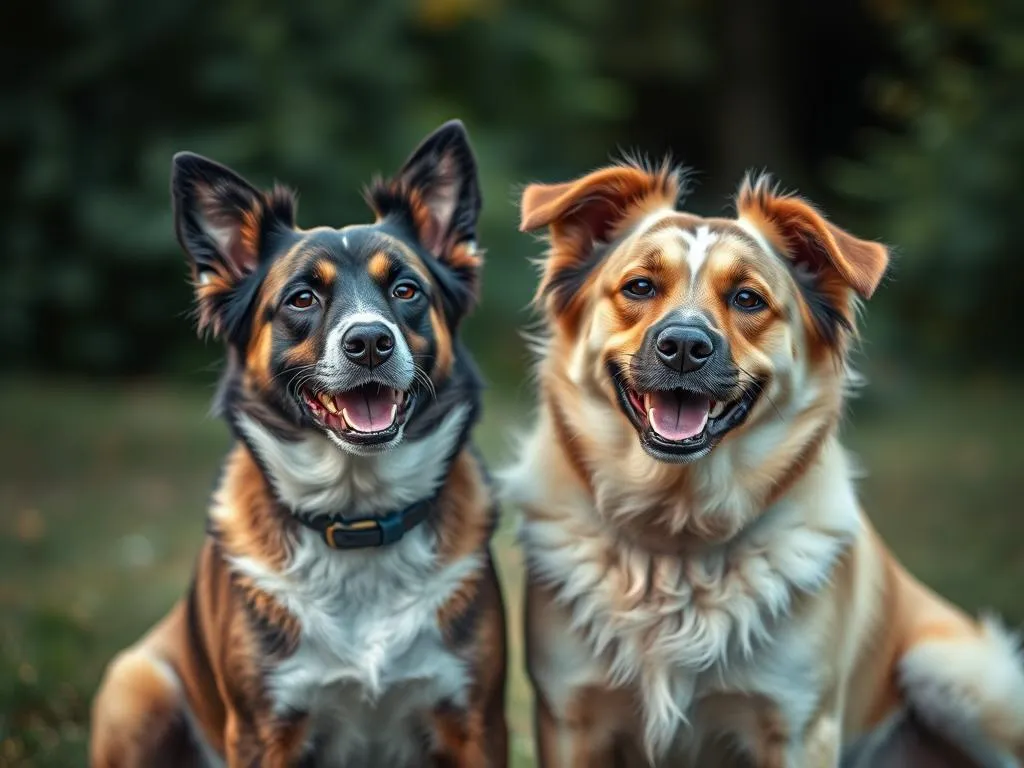
The bond between dogs and humans is a remarkable testament to loyalty and companionship. But what about the friendships that dogs form with each other? The question, do dogs have best friends, delves into a fascinating aspect of canine social behavior. Understanding these relationships is crucial for dog owners, as it not only enriches our pets’ lives but also helps us create a nurturing environment that promotes their well-being.
Understanding Canine Social Behavior
The Pack Mentality
Dogs are inherently pack animals, a trait that harkens back to their wolf ancestors. In the wild, they rely on their pack for survival, and this social structure is evident in domestic dogs as well. The pack mentality emphasizes the importance of social hierarchy, where each dog understands its place among other dogs and humans. This instinctual behavior lays the groundwork for friendships; dogs learn to bond with those they consider part of their “pack.”
Socialization in Dogs
Socialization is a critical aspect of a dog’s development. It refers to the process by which a puppy learns to interact with other dogs, animals, and people. Proper socialization during key periods—typically between three to 14 weeks of age—can lead to a well-adjusted adult dog. When dogs are exposed to various social situations, they develop better communication skills and emotional intelligence, which are essential for forming friendships.
Types of Friendships in Dogs
Dogs can form a variety of relationships. These can include close bonds with other dogs, humans, and even other animals. Some dogs might have a specific canine companion that they connect with deeply, while others may enjoy a broader circle of friends. Understanding the dynamics of these relationships can help owners create environments that foster healthy social interactions.
Do Dogs Form Close Bonds?
Evidence of Close Relationships
Research indicates that dogs are capable of forming close relationships with each other, akin to human friendships. A study conducted by animal behaviorists found that dogs often prefer the company of certain peers over others, displaying signs of excitement and eagerness when reunited with their dog friends. Anecdotal evidence from dog owners further supports this, as many report that their dogs exhibit unique behaviors around favored companions, such as tail wagging, playful barks, and a relaxed demeanor.
Signs Your Dog Has a Best Friend
Recognizing whether your dog has a best friend involves observing certain behaviors. Here are some indicators that your dog may have formed a close bond:
- Play Behaviors: Dogs that are best friends often engage in playful behaviors, such as chasing, wrestling, and sharing toys.
- Comfort-Seeking: If your dog seeks comfort from another dog during stressful situations, it’s a strong sign of friendship.
- Greeting Rituals: Notice how your dog reacts when they see their friend. Excited greetings, jumping, and tail wagging are all positive signs.
Dogs and Their Human Companions
The bond between dogs and their owners is often considered one of the strongest forms of friendship in the animal kingdom. Dogs rely on their humans for care, but the attachment goes deeper. Many dogs view their owners as companions and protectors, forming a relationship built on trust and affection. Consequently, humans can be seen as best friends to their dogs, offering emotional support and companionship in return.
Factors Influencing Dog Friendships
Breed Differences
Different dog breeds exhibit varying social behaviors, which can influence their capacity to form friendships. For example, herding breeds like Border Collies tend to be more social and eager to interact, while more solitary breeds like the Basenji may be less inclined to develop close bonds with other dogs. Understanding these differences can help owners tailor their socialization strategies to fit their dog’s breed characteristics.
Age and Experience
Age plays a significant role in a dog’s ability to form friendships. Puppies are generally more open to social interactions, making it easier for them to connect with peers. In contrast, older dogs may be set in their ways, potentially leading to reluctance in forming new friendships. However, positive experiences and gradual introductions can help older dogs adapt and foster new bonds.
Environment and Lifestyle
The environment in which a dog lives profoundly impacts its social relationships. Dogs that live in busy households or regularly attend dog parks often have more opportunities for interaction, increasing the likelihood of forming friendships. Conversely, dogs in quieter, less stimulating environments may not have as many chances to socialize. Ensuring your dog has the right lifestyle and environment can greatly enhance their ability to build friendships.
Benefits of Having a Best Friend for Dogs
Emotional Well-Being
Friendships play a vital role in a dog’s emotional health. Dogs with strong social connections tend to display fewer signs of anxiety and depression. The comfort of having a friend nearby can alleviate feelings of loneliness, leading to a happier, more balanced life.
Physical Health Benefits
Play and social interaction are essential for keeping dogs physically active. Engaging with friends helps dogs exercise naturally, leading to improved fitness levels and overall health. Regular playdates can reduce obesity risk and promote healthier lifestyles, allowing dogs to thrive both physically and mentally.
Behavioral Benefits
Having a best friend can also lead to positive behavioral changes. Dogs that socialize regularly are less likely to develop behavioral issues, such as aggression or fearfulness. The interaction teaches them important social cues and helps them learn how to navigate various situations more effectively.
Encouraging Friendships in Dogs
Tips for Socializing Your Dog
To help your dog form friendships, consider the following best practices for socialization:
- Start Early: Begin socializing your puppy during the critical period of development.
- Gradual Introductions: Introduce your dog to new friends slowly to prevent overwhelming them.
- Positive Reinforcement: Use treats and praise to encourage positive interactions.
Playdates and Group Activities
Facilitating social interactions can be as simple as organizing playdates with other dogs or participating in group activities. Dog parks, training classes, and group walks are excellent opportunities for your dog to meet new friends. Make sure to choose safe, controlled environments that encourage healthy interactions.
Recognizing Signs of Compatibility
When introducing two dogs, it’s essential to assess their compatibility. Look for signs of mutual interest, such as wagging tails and playful body language. Conversely, if one or both dogs show signs of stress, such as growling or hiding, it may be best to separate them and try again later.
Potential Challenges in Dog Friendships
Jealousy and Competition
Just like humans, dogs can experience jealousy and competition within friendships. This is particularly common in multi-dog households, where one dog may feel threatened by another’s presence. Understanding these dynamics and managing interactions can help mitigate potential issues.
Aggression and Conflict
Occasionally, dogs may display aggression or conflict during social interactions. It’s crucial to recognize the signs and intervene if necessary. Providing proper training and supervision can help prevent escalating situations and ensure that all dogs involved feel safe and comfortable.
Separation Anxiety
The loss of a dog friend can be particularly distressing for canines, leading to separation anxiety. Dogs may exhibit signs of distress, such as whining or destructive behavior, when separated from their companions. Acknowledging this emotional pain and providing comfort can help ease their transition.
Conclusion
The question of do dogs have best friends highlights the significance of social relationships in the canine world. Dogs thrive on companionship, whether with other dogs or their human family members. By fostering these bonds, we can enhance their emotional and physical well-being, leading to happier, healthier lives. As dog owners, it’s our responsibility to nurture these friendships and create environments that encourage social interaction. Every dog deserves the joy of having a best friend, and understanding their social needs is the first step in providing a fulfilling, enriched life.









